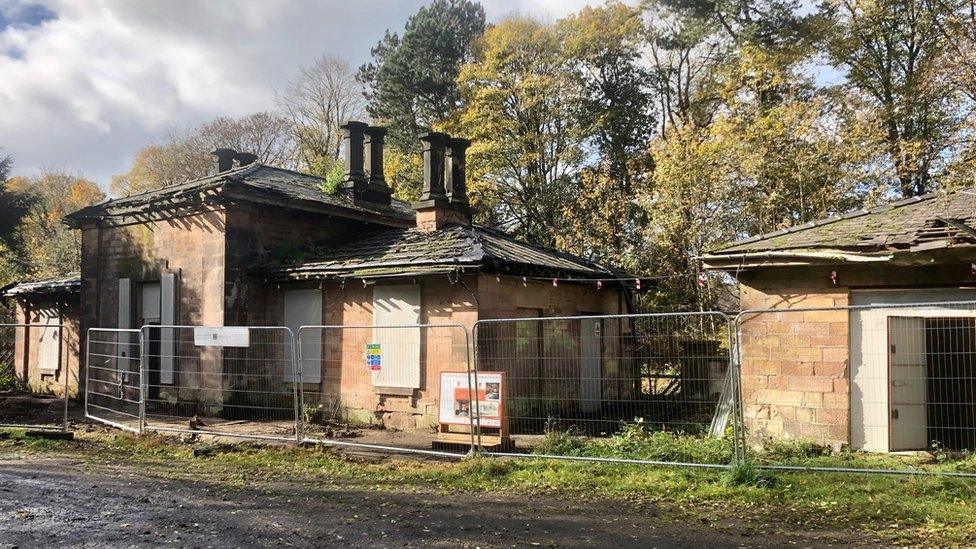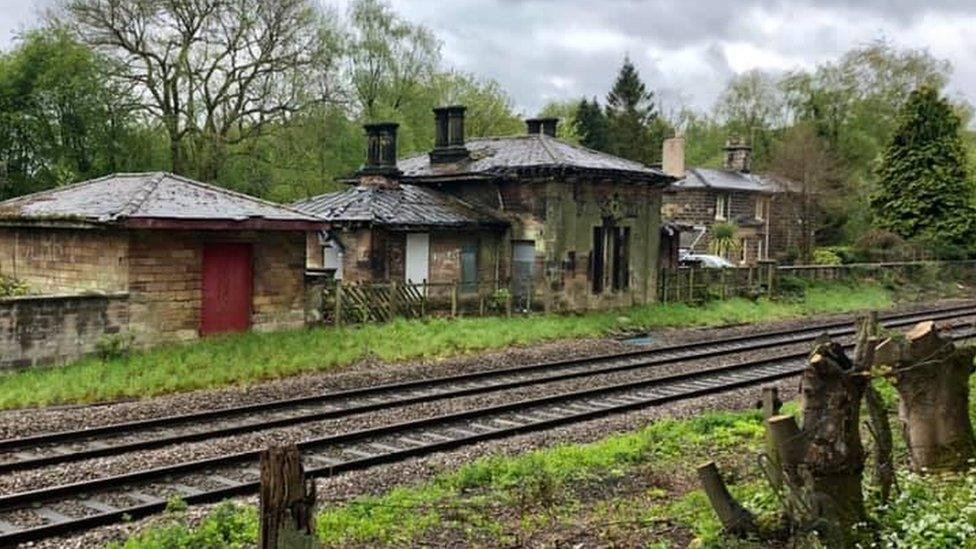Campaign launched to save Wingfield Station, in Derbyshire
- Published

The trust says despite years of neglect, the buildings are largely in tact
A campaign is being launched to save one of the earliest surviving examples of a rural railway station, with links to railway pioneers.
Derbyshire Historic Buildings Trust hopes to raise £250,000 to save Wingfield Station, built in 1840.
The station is the sole survivor of 16 that were originally part of a scheme developed by railway engineers George and Robert Stephenson.
Project leader Peter Milner said the station was "so unique and important".
'Wonderful'
The Grade II* listed station served the Midland Mainline between Derby and Leeds until the building was closed in 1967 as part of the Beeching cuts, Mr Milner said.
The site was bought under compulsory purchase by Amber Valley Borough Council in 2019, before ownership was transferred to the trust.
Mr Milner said despite 40 years of neglect, the original buildings were largely in tact.
"The building has the original cornices, the original windows - it is so original in almost every respect," he said.

The trust hopes it will be supported by members of the public and rail enthusiasts who want to preserve the structure
The first phase of the £1.7m project - urgent works to weatherproof the building - has taken place.
But the trust hopes that with the assistance of funding from Historic England and a Heritage Lottery Fund bid, as well as its own fundraising, it will be able to convert the building into offices, as well as allowing guided tours for members of the public.
It hopes to encourage members of the public to make donations or become a friend of the station.

First stops on the lines
Most of the world's oldest stations are located in Britain - where rail travel was invented - and were built from 1830 onwards
The Liverpool Road railway station in Manchester, dating from 1830, is believed to be the world's oldest railway station. It now forms part of the Science and Industry Museum in the city.
Many other early stations established as wooden structures have been remodelled and continue to operate.

"We hope we will win the support of rail enthusiasts and members of the public who are simply interested in preserving a wonderful building like this," said Mr Milner.
"The building was designed by architect Francis Thompson for the Stephensons' railway and it became the template for urban villas across the country.
"It is so unique and so important."
The trust will be launching its campaign later at Derby's Museum of Making, where members will be appearing in costume as the Stephenson engineers.

Follow BBC East Midlands on Facebook, external, Twitter, external, or Instagram, external. Send your story ideas to eastmidsnews@bbc.co.uk, external.
Related topics
- Published11 August 2010